Flipping the Wing-T Line and Backfield
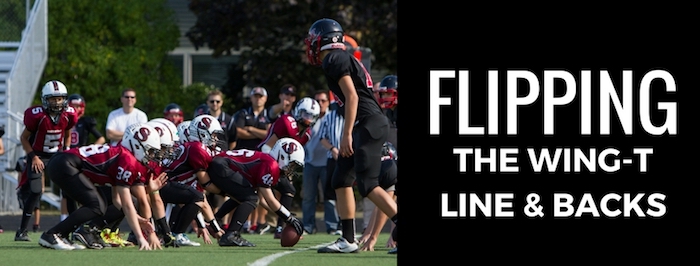
My offensive line has been struggling this season. I take full responsibility for this problem, and over the past two weeks I’ve been taking steps to troubleshoot and hopefully resolve some of our challenges.
What problems are we having?
- We have a lack of depth, or rather usually when we do have depth the falloff is significant from the starter to his backup.
- I have two pretty decent guards, but they have very different makeup. My right guard is bigger and slower (he is a “striper” – a player over the weight limit for our 8th grade league and therefore not eligible to be a ball carrier). My left guard is one of the best athletes on the team – quick, strong, and intelligent.
- I have one big tackle (also a striper) who does a great job down blocking and reaching a defensive lineman, but because of his size and slowness has a hard time with a lot of backer blocking and pulling.
- Our tight end play has been pretty atrocious in terms of blocking. I’ve had two good athletes playing the position and they have shown good hands and have made some important catches for us this season. The problem is that one of them is soft in his blocking and the other is struggling with his blocking rules (though he is tough and working very hard).
- Our running back blocking has been spotty, both on the strong side and weak side.
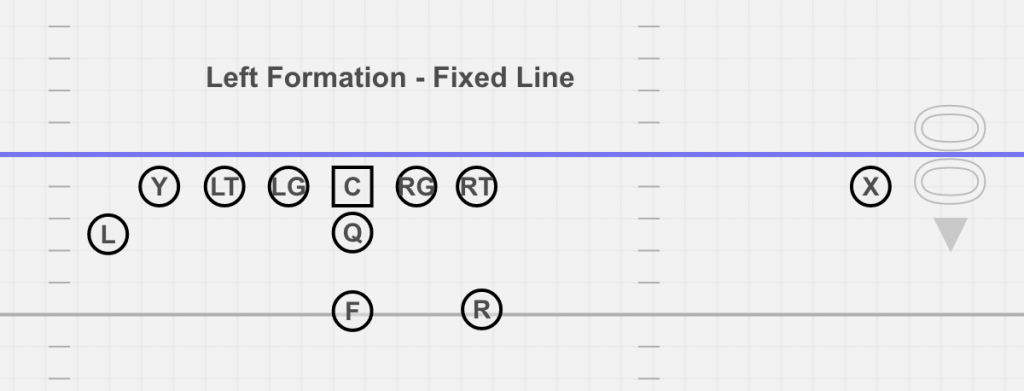
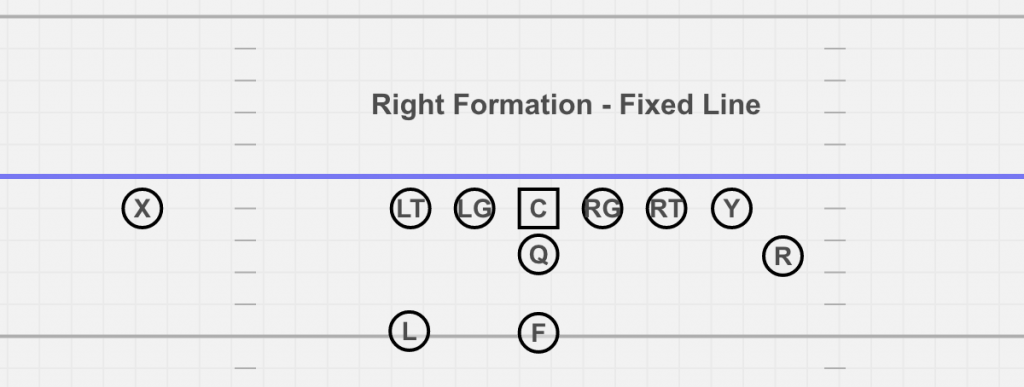
My heritage with the Wing-T is to not “flip” the line - a right guard is a right guard, regardless of our formation strength (where we put the TE). I’ve talked to a great many Wing-T coaches over the past two years that flip their line to strength, and given the problems I’ve seen this season it was time to try it. I dislike making a change like this mid-season, but the alternative was to pretend there wasn’t a problem or try to ask the problems in other ways. For example, one way to mask it would be to run plays more often with strength to the right side so that the RG and RT are better able to handle their assignments. The problem with this approach is that it would lead to some formation tendencies.
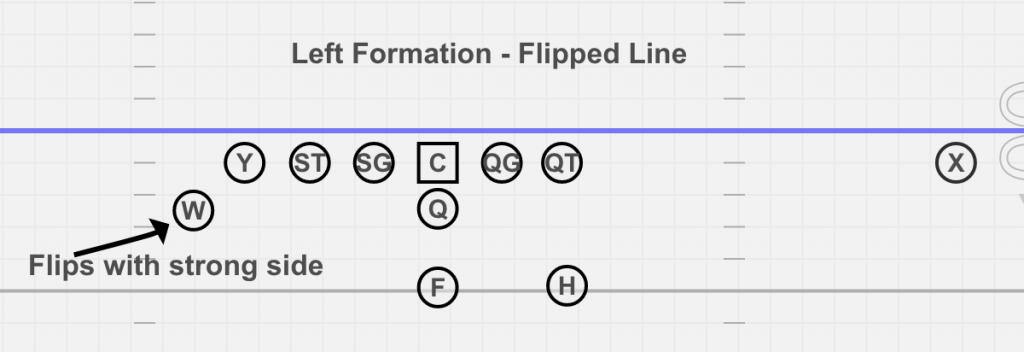
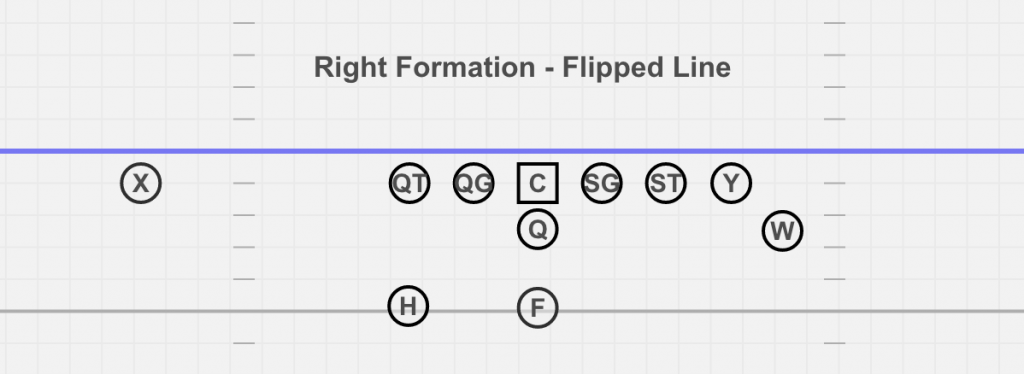
So what changes when you start flipping the line? The biggest changes are for the guards and tackles, though we also decided to flip our halfbacks and wingbacks to take advantage of a better blocking back that we can put into the wing position. Here’s a summary of how things change:
- Instead of right/left guards and tackles, we have these positions: strong tackle, strong guard, quick tackle, quick guard. Nothing changes for the center and tight end – the center is by definition in the middle of the formation, and the TE has always flipped to strength.
- Instead of a left back and a right back, we now have a halfback and a wingback. The halfback is our best running back (along with the fullback), and the wingback is primarily a blocking back, though he will at times run the counter and jet sweep. He is also a receiver in our quick passing game.
- The players’ required knowledge gets cut in half. Specific example: our strong guard only needs to know that he will always be the kickout block for buck sweep, and the quick guard will always lead through the hole on buck sweep. Less to learn, and less to drill. There are a few exceptions to this: an example is that we run jet sweep to the strong and weak side. The playside guard pulls and logs (with a kickout option) so both guards need to be able to know and execute this.
The response from the players was positive, and we did see some improvement in our first game doing this last week (though we still lost). This week my challenge has been solving our TE problem, and I’ve moved one player out and another in to see if we can improve. How about the backup TE that is working hard but having assignment problems? We drilled a ton of half-line this week to get him more comfortable with his down blocking on down, down sweep, and buck sweep. He unfortunately likes blocking the man heads up or outside shade on him instead of following his rule. Hopefully we’ve solved that problem – I’ll know for sure tomorrow night!